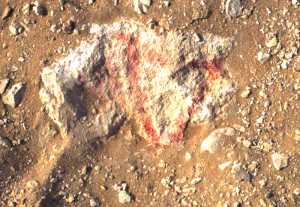Persons with some knowledge about hieroglyphics and names of pharaohs will stumble over some curious signs. So I had to laugh out loud when I saw them in Sitchins book.
This chain of symbols we can find in Sitchins Stairway to heaven on table 145 a (upper left, on its head) cannot be there if Sitchin is right. Or, the other way round, its existence is the ultimate proof that Sitchin s wrong.
These symbols show a name of Khufu which was at that time, in 1837, unknown. Even better: it was even unknown then that this is a name!
The name is "Mddw" and it is the so-called Horus name of Khufu.
Pharaohs had not only one name, the fully developed titulatory consisted of five names, and also each pharaoh carried a lot of titles.
The most important names were the birth- and the throne name, both were written in the so-called cartouches. Those were mentioned in decrees and written down in kings lists. To distinguish between those two names special titles were placed before them. A goose and a sun disc (Sa-Re, Son of the Sun) was written in front of the birth name, whereas a bee and a reed as "king of upper and lower Egypt" always stood before the throne name.
Those names were not only empty sound chains like our names today, they all had a meaning. The name the pharaoh chose as his throne name was really a political statement, like "Lord of order" or "he who repeats the creation".
But not in dynasty 4! At that time there existed no second cartouche name, and Khufus father Snofru might even be the first pharaoh in Egyptian history who introduced a cartouche to his name! Around his birth name, like Khufu, Khafre, Menkaure...
The first pharaoh who used the cartouche for his birth- and throne name was Neferirkare, the third pharaoh of dynasty 5 (the names can be looked up in J.v. Beckeraths Handbuch der ägyptischen Königsnamen, MÄS 49, Zabern 1999).
And before that? Well, the pharaoh only had his birth name in a cartouche (which had, to complete the confusion, the bee-reed-titulatory in front which was later associated with the throne name), and the cartouche-less Horus name as throne name! Those Horus names were not recorded in the king lists of the New Kingdom, which are the main sources for those names. There only cartouche names are recorded, and so Khufu became known to us through his birth- and not his throne name! And this was the only name for the king known at Vyses time!
The throne name of Khufu, "Mddw", means something like "he who gives" - goods to his people. Neither the meaning nor the existence of this name was known around 1840, not even to Birch. Birch, according to Sitchin te greatest hieroglyphic expert of his time, had the name before his eyes. He thought it was "just some title". So how could a faker, who had no knowledge about hieroglyphics at all, know more than the worlds biggest expert of that trade?
One explanation comes from Sitchin himself: inscriptions were found in the surrounding tombs, and it might be possible that one included the Horus name. The faker just copied it from the tomb without knowing the meaning.
Unfortunately for Sitchin no such tomb is known. Ant the idea is stupid because of the circumstances the horus name appears in. The writings were not meaningless scribbling like "Kilroy was here", they had a function: to assign blocks to the different worker groups. From discoveries in worker tombs we know that the workforce was divided into four large groups, each one working on one side of the pyramid.
The inscriptions in the chambers represent exactly these four teams (Phylae). My colleague Rainer Lorenz has an article about their names on his Homepage, and they are::
So we do not have isolated names, the names were part of a whole sentence. The writer of these texts must have had not only knowledge about the Horus name, but also about how to use it and include it into a working group name. He needed knowledge no hieroglyphics expert of the 1840s had - knowledge of an ancient Egyptian!
The last possibility would be a working group name in a tomb discovered until 1837, but that is also no solution. Tombs containing that information were not found until the late 20th century!
 Sitchins argumentation has more weak points I will demonstrate now. For example Vyse's journal.
Sitchins argumentation has more weak points I will demonstrate now. For example Vyse's journal.
This is now in the British Museum, but can be viewed by everyone. Martin Stower had the opportunity to see it, and he photocopied several key pages from it. He was so friendly to send me the most important pages of it.
According to Sitchin, Vyse believed that "Khufu" was written with a solar disc. And because of that the faker had written it this way into the chamber. But Vyses Journal tells another story:
On May 27 1837 we find the first entry dealing with the Khufu-cartouche. In the following days Vyse begins with an analysis. And if one is able to read his hand writing he finds out fascinating things. Yes, Vyse was no expert on hieroglyphics. And yes, Vyse had the fatal book "Materia Hieroglyphica" with him. And because he HAD the book with him he expected a solar disc as the first sign. And he was wondering, why this sign was NOT a solar disc. He couldn't get a sense out of the "Kh", therefore he philosophises on this page of his journal about the possibility to write a "Re" with lines in it instead of a dot.
He even copied the faulty picture from Wilkinson to this page of his notes, it's on the upper left - the hollow solar disc is clearly visible. On the right side e notes, that this disc can also be written with a dot in the middle (the small circle on top) and that he had expected one of these two writings - and notes, that he instead got a circle with three lines. This is clearly an aberration from Wilkinson, a famous hieroglyphic expert. So Vyse did not copy something from a book to the walls - he found something that completely contradicted a table of a famous academic book. I would say, that's a classical own goal for Sitchin and his faker story :-)
 A last point: Sitchin denied several times the existence of quarry marks on other buildings (to isolate the Great Pyramid), and he denied that IF there was something like quarry marks they could have survived so fresh looking.
A last point: Sitchin denied several times the existence of quarry marks on other buildings (to isolate the Great Pyramid), and he denied that IF there was something like quarry marks they could have survived so fresh looking.
Well, one visit to Egypt could have cleared these questions. Quarry marks are all over the place. In every pyramid complex and on every mastaba field one only has to open his/her eyes to see them. The mark in this picture is on a block on top of Khafres mastaba (Khaf-Khufu, as he was called as prince), and the color has withstood wind and weather for some time. Clear and fresh.
Another example can be visited in Dahschur: during the excavations in the late 1990's many blocks with quarry marks from the Red Pyramid were collected and brought to a spot on the south east side of the pyramid. There are now lying hundreds of testimonies on stone against Sitchins assertion in the sun, for everyone to see.
Some defenders of Sitchins thesis are now claiming that unless the pigment of the markings has not been carbon dated and the result would lie in the range of the alleged pyramid building, there would be no evidence at all that the writings are contemporary with the pyramid.
Well, these authors should read Sitchin better, because even he knows that this would be futile. On p. 311 of the German edition of Stairway to heaven we can read, that the red colour used by the pyramid builders is a natural iron oxide, ochre. Totally inorganic and not datable.